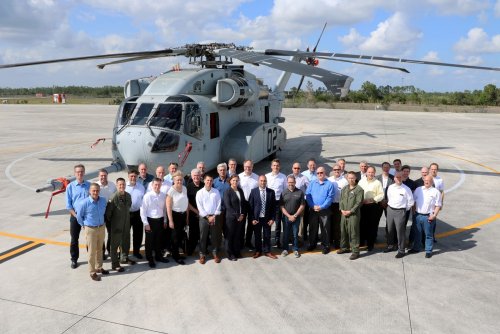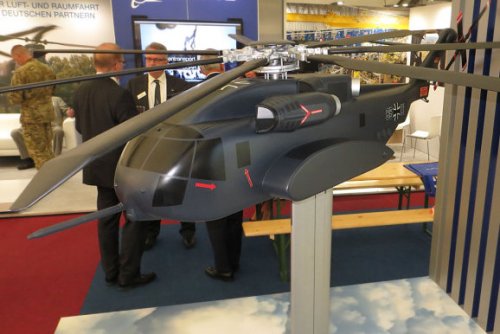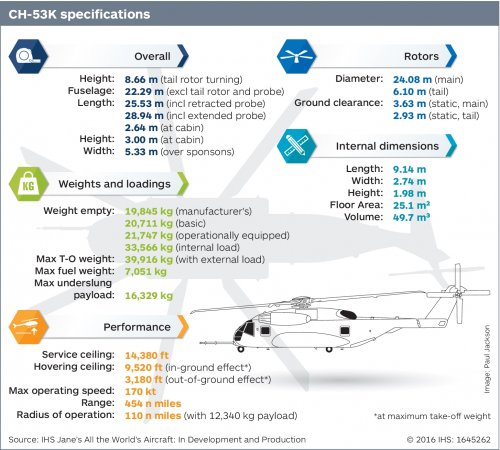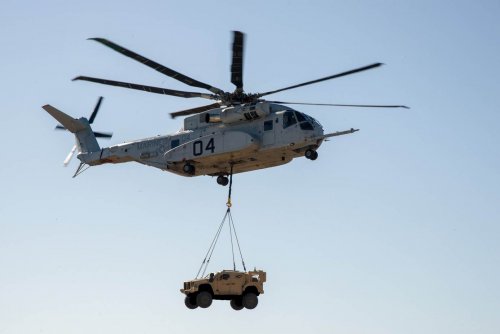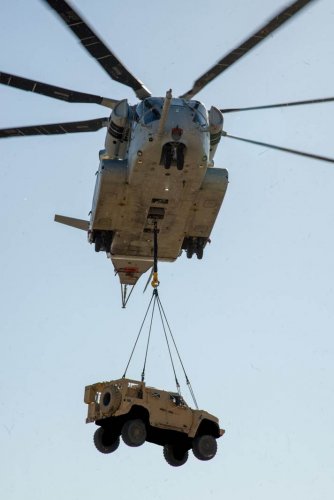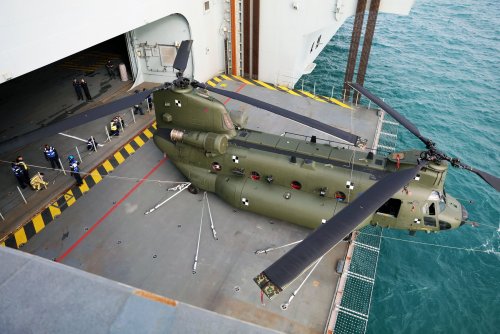The Marine Corps is disputing recent assertions that the CH-53K chopper is more expensive than an F-35 Joint Strike Fighter, as the heavy-lift helicopter program awaits an initial production decision from Pentagon leadership.
During a Monday briefing at the Navy League’s annual Sea-Air-Space conference, Col. Hank Vanderborght sought to clarify the cost of the CH-53K aircraft. The issue stems from a March 10 House Armed Services Committee hearing, during which Rep. Niki Tsongas (D-MA) said a new estimate puts the cost of the CH-53K helicopter at $122 million apiece, or 22 percent more than the original baseline. She compared it to the F-35A conventional-takeoff-and-landing jet, which cost $94.6 million per copy in the Lot 10 buy.
But Vanderborght said outside cost estimates were not accurate, adding that the initial aircraft produced under any aircraft program will naturally be priced higher because of the costs associated with non-recurring engineering and establishing the production line.
He said measuring the first aircraft produced in one program against the 100th produced under another is "comparing apples and oranges." The CH-53K is still under development, with just four test aircraft delivered so far, while the F-35 program had produced nearly 200 aircraft as of December.
"The first unit in a production run costs more than the last unit," Vanderborght said. "It's economies of scale. There are things called learning curves, rate curves and things like that that we use to calculate cost."
The Marine Corps expects the CH-53K’s flyaway unit cost will average $87.1 million in FY-17 dollars over the life of the 200-aircraft program, according to Vanderborght. The flyaway unit cost represents the true price of each aircraft, he said, although it does not account for ancillary program costs such as development or sustainment.
As of August 2016, the CH-53K program acquisition unit cost -- or the average unit price when taking the full cost of the program into account -- is $131.3 million in FY-17 dollars, according to the Government Accountability Office’s March 2017 "Assessments of Selected Weapon Programs" report. Vanderborght said he agrees with that figure.
GAO’s report says the total CH-53K program cost has risen to $26.2 billion in FY-17 dollars -- $6.9 billion in research and development and $19.2 billion planned for procurement. When the program started in 2005, the total program cost was expected to be $17.9 billion in FY-17 dollars, according to GAO.
Initial operational capability is planned for the first quarter of FY-20, with a full-rate production decision expected in FY-21, according to Vanderborght. He said the program has flown more than 400 test flight hours.
The Pentagon's acquisition chief was scheduled to chair a March 30 Defense Acquisition Board meeting on whether to advance the CH-53K program from development into low-rate initial production, Bloomberg reported last week. The defense secretary's office did not respond to requests for comment on the outcome of the meeting.
Vanderborght said the program was ready to move into LRIP. But he confirmed initial production would be delayed under a full-year continuing resolution, unless the CH-53K program receives a waiver from Congress. The ongoing CR runs through the end of April. The Navy requested $436 million in FY-16 to buy two CH-53Ks as part of the first lot of low-rate initial production, according to budget justification documents.
Shifting facilities
The GAO report also describes the challenges the CH-53K program faces in standing up a production line, as the facilities are being moved from Florida to Connecticut because of Lockheed Martin’s November 2015 purchase of CH-53K prime contractor Sikorsky from United Technologies, according to the auditors.
"The move will require a number of equipment and configuration changes to Sikorsky's Stratford[, CT], facility, which will take time to complete and pose risk to the CH-53K production schedule," according to the report. "Program officials continue to assess the potential impacts of the production relocation."
The CH-53K program office, however, said the move to Connecticut "was driven by required capacity and not the Lockheed Martin acquisition."
The fifth system demonstration test article will be the first CH-53K assembled at Sikorsky's Stratford facility early next year, according to Michael Torok, Lockheed's vice president of CH-53K programs.
During the Monday briefing, Torok said the Stratford facility -- which has mostly produced Army Black Hawks and Navy Seahawks over the past decade -- is being modified to accommodate final assembly of the larger CH-53K.


